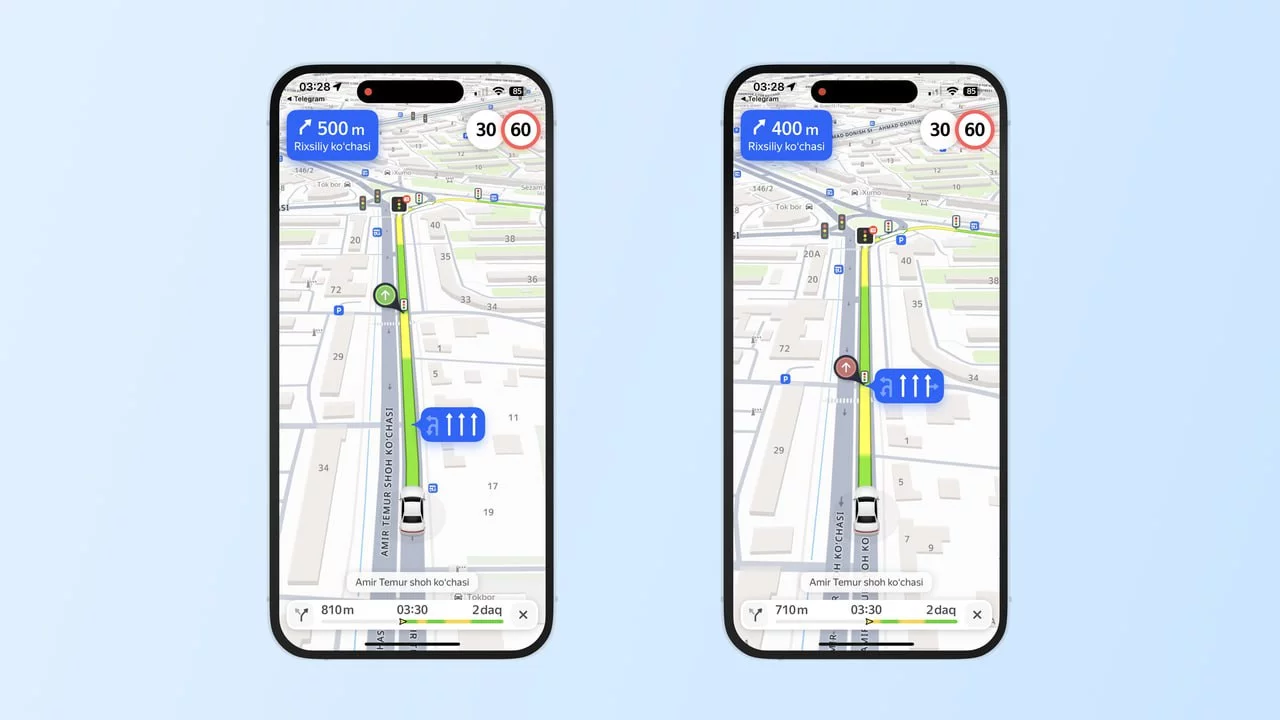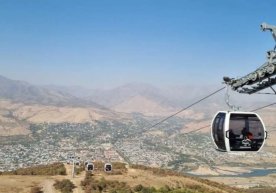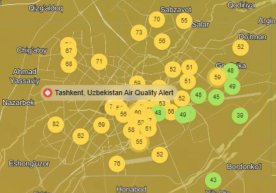
Traffic light signals now appear in real time inside navigation apps. The local team of Yandex, in cooperation with the country’s Ministry of Internal Affairs, has launched this pilot solution.
From now on a driver can glance at the phone screen and see exactly which color is lit at the intersection. This helps a lot at night with limited visibility or in rain. In upcoming updates an on‑screen countdown timer showing how many seconds remain until stop or movement is planned.
The timer lets drivers plan a maneuver in advance and reduce extra stress. The pilot is currently operating at several key intersections in the city center. Routes along Amir Temur Avenue and the junction where Tiklanish and Gulyor streets cross are included among the project’s initial points.
Data taken from installed sensors is displayed live in Yandex Maps and Navigator apps. The local team intends to expand the solution step‑by‑step to other cities if the trial proves successful.
Live traffic light status aims to improve road safety. It lowers the chance that a driver who failed to see the signal will brake late or make a sharp turn. This is expected to help cut the number of road incidents at intersections.
It will be easier for new drivers to read urban obstacles. When a low‑experience driver is unsure what to do, the color on the screen acts as a cue. The project also updates the formulas used to calculate arrival time to destination.
The apps will now be able to consider actual stop intervals instead of averages. As a result, estimated arrival times get more accurate and people can plan trips better and avoid being late. This feature also matters for taxi services because a customer can be shown the real wait time for a car.
Taxi fleets can trim wasted minutes when planning movement. Using the new data the apps can recommend a so‑called green wave — a chain of consecutive passes. A permissible optimal speed will be suggested to clear several intersections without unnecessary stops.
That shortens travel time and helps save fuel. A steady green chain smooths traffic flow and slows the formation of jams. Statistics collected during the trial will let control centers better synchronize traffic light cycles.
The information also appears on the vehicle’s main display through Apple CarPlay and Android Auto. So a driver does not need to pick up the phone to track the signal.
In‑cabin voice alerts deliver information without taking attention off the road. In the near future this solution may also connect with the Yandex Go service bundle. That link would make arrival time estimates for hailed taxis even more reliable.
A common question is where the system gets its data. There is an assumption that traffic management services stream signal status directly from traffic light controllers. Full technical details have not yet been disclosed in official sources; fact not verified.
Experts suggest that signals are aggregated on servers and pushed to apps with a short delay. It is thought that, for safety, data travels over encrypted channels. It is stated that no license plates or other private data pass in the stream, but no open documentation confirms this; fact not verified.
Some believe the system uses very little internet traffic because the transmitted packets are tiny. Battery drain is assumed to be close to normal navigation mode. For solid GPS reception it is recommended to keep the device near a window; no official figures on these points have been provided. Fact not verified.
Updates are said to make it easier to use the feature together with offline maps. Even if the map runs offline, the traffic light color still arrives live via the internet; a logical technical requirement, but no official confirmation. Fact not verified.
Navigation apps support multiple languages, creating a comfortable environment for different drivers. You can choose a local language in the interface, which makes voice prompts easier to understand. A voice assistant can be enabled and used hands‑free.
Multilingual support helps you avoid getting lost on inter‑regional trips. Extra services are available in the navigation menu, such as requesting a taxi from the destination point. The company uses fast rerouting algorithms and offers corrections if conditions change.
If the color changes before you reach the next intersection, the route recommendations may be reconsidered. The app continues voice notices even in heavy traffic. In magnified mode the visual indicators show road signs more clearly; this matches the general Yandex Maps experience.
Short reminders to keep a safe distance and to respect the stop line may appear, according to speculation. Specialists think such prompts can especially reduce slipping or hard braking in congestion; no official confirmation. The color change on screen as you approach a light catches the eye faster; fact not verified.
There is a hypothesis that timely brake response also cuts excess energy use. Experienced drivers say you feel less fatigue when you control motion smoothness better; no formal studies shown. Fact not verified.
It is a logical view that project data will be gathered for statistical analysis. Knowing at which intersections and at what times stops are most frequent can help assess crash risk. No official specifics on the statistical process; fact not verified. Official information does, however, stress the project’s goal of improving overall safety and traffic forecast accuracy.
An expansion plan to other regional centers in the country is also mentioned in official text. After trials the technology is expected to roll out gradually to other cities. Infrastructure adaptation will be required before launch in each new region; technical details remain undisclosed.
Feedback from drivers is very important for the pilot’s success. Inside the app you can leave a comment, rate it, or send a message to support. The developers have said they accept user feedback.
Navigation tech grows stronger every year. It is becoming not just a map but a digital mirror of road infrastructure. The live traffic light project is a convincing example of this trend.
A new kind of dialogue with the urban environment is forming through digital signals. Every new data point refines the overall model. In the future deep analytics tools may dynamically optimize stop intervals; a self‑regulating cycle scenario is still only a possibility, fact not verified.
There is hope this will also improve safety for pedestrians, not just drivers. Combined with added video sensors the system could become a preventive tool rather than a punitive one. Open information about research on such automation remains insufficient; fact not verified.
People say developers are working on open integration points inside the navigation app. There is a notion that external services could receive traffic light data into logistics platforms through gateway connectors. Experts note that feedback from vehicle fleets would help evaluate the system from a business perspective; no official confirmation of an open API, fact not verified.
Analysts hope to see which intersections face longer delays during peak loads. Such information could spur cost‑saving decisions in planning delivery chains; however this is only an assumption, no official description.
Accurate geolocation on your device is important for full use of the feature. If a window’s metallic film blocks GPS, an external antenna is recommended. Closing background resources while navigating can extend battery life. A stable mobile network or Wi‑Fi is needed for fast data; some device tips are practice‑based, fact not verified. Offline map support is officially confirmed.
It is said that if the internet drops, the last received traffic light color remains cached briefly; no official confirmation. The solution may positively affect driver habits. Greater attention to the signal can strengthen the habit of stopping before the stop line; this aligns with broader road safety efforts.
It is expected that early starts or running red lights will likewise decline. City police are anticipated to support such a drop in statistics; no official numbers yet. When driving discipline improves, all road users feel safer.
There is news for passengers too. When linked with taxi apps, a client sees more precisely how soon the car will arrive. That reduces waiting stress and can positively influence service ratings.
Some think that by cutting idle pauses a driver will lower daily travel costs. Time accuracy as judged by the customer will intensify competition among services; official reports are awaited.
Participants in the pilot are already inviting others to join. You can update your navigation, switch on the new feature, and try it out. If you send feedback, the team promises a quick reply. The more awareness we have on the roads, the easier every trip becomes. The live traffic light project is a big step toward that goal. Read “Zamin” on Telegram!
Ctrl
Enter
Found a mistake?
Select the phrase and press Ctrl+Enter Related news
Information
Users of Меҳмон are not allowed to comment this publication.
Users of Меҳмон are not allowed to comment this publication.













